
Rabbit Anti-WWOX antibody
D16S432E; FOR; FOR II protein; FRA16D; Fragile 16D oxido reductase; fragile site FRA16D oxidoreductase; HHCMA 56; HHCMA56; PRO0128; putative oxidoreductase; WOX 1; WOX1; WW domain containing oxidoreductase; WW domain-containing protein WWOX; WWOX2; WWOX4;
View History [Clear]
Details
Product Name WWOX Chinese Name 包含氧化还原酶的WW域抗体 Alias D16S432E; FOR; FOR II protein; FRA16D; Fragile 16D oxido reductase; fragile site FRA16D oxidoreductase; HHCMA 56; HHCMA56; PRO0128; putative oxidoreductase; WOX 1; WOX1; WW domain containing oxidoreductase; WW domain-containing protein WWOX; WWOX2; WWOX4; WWOX8; WWOX. literatures Research Area Tumour immunology Neurobiology Signal transduction transcriptional regulatory factor Mitochondrion Epigenetics Alzheimer's Immunogen Species Rabbit Clonality Polyclonal React Species Human, Mouse, Rat, Applications WB=1:500-2000 ELISA=1:5000-10000 IHC-P=1:100-500 IHC-F=1:100-500 Flow-Cyt=1ug/test IF=1:100-500 (Paraffin sections need antigen repair)
not yet tested in other applications.
optimal dilutions/concentrations should be determined by the end user.Theoretical molecular weight 46kDa Cellular localization The nucleus cytoplasmic Mitochondrion Form Liquid Concentration 1mg/ml immunogen KLH conjugated synthetic peptide derived from human WWOX: 5-100/414 Lsotype IgG Purification affinity purified by Protein A Buffer Solution 0.01M TBS(pH7.4) with 1% BSA, 0.03% Proclin300 and 50% Glycerol. Storage Shipped at 4℃. Store at -20 °C for one year. Avoid repeated freeze/thaw cycles. Attention This product as supplied is intended for research use only, not for use in human, therapeutic or diagnostic applications. PubMed PubMed Product Detail WW domain-containing proteins are found in all eukaryotes and play an important role in the regulation of a wide variety of cellular functions such as protein degradation, transcription, and RNA splicing. This gene encodes a protein which contains 2 WW domains and a short-chain dehydrogenase/reductase domain (SRD). The highest normal expression of this gene is detected in hormonally regulated tissues such as testis, ovary, and prostate. This expression pattern and the presence of an SRD domain suggest a role for this gene in steroid metabolism. The encoded protein is more than 90% identical to the mouse protein, which is an essential mediator of tumor necrosis factor-alpha-induced apoptosis, suggesting a similar, important role in apoptosis for the human protein. In addition, there is evidence that this gene behaves as a suppressor of tumor growth. Alternative splicing of this gene generates transcript variants that encode different isoforms. [provided by RefSeq, Jul 2008]
Function:
Putative oxidoreductase. Acts as a tumor suppressor and plays a role in apoptosis. Required for normal bone development (By similarity). May function synergistically with p53/TP53 to control genotoxic stress-induced cell death. Plays a role in TGFB1 signaling and TGFB1-mediated cell death. May also play a role in tumor necrosis factor (TNF)-mediated cell death. Inhibits Wnt signaling, probably by sequestering DVL2 in the cytoplasm.
Subcellular Location:
Cytoplasm. Nucleus. Mitochondrion. Golgi apparatus. Partially localizes to the mitochondria. Translocates to the nucleus upon genotoxic stress or TNF stimulation (By similarity). Translocates to the nucleus in response to TGFB1. Isoform 5 and isoform 6 may localize in the nucleus. Target information above from: UniProt accessionQ9NZC7 The UniProt Consortium The Universal Protein Resource (UniProt) in 2010 Nucleic Acids Res. 38:D142-D148 (2010).
Tissue Specificity:
Widely expressed. Strongly expressed in testis, prostate, and ovary. Overexpressed in cancer cell lines. Isoform 5 and isoform 6 may only be expressed in tumor cell lines.
Post-translational modifications:
Phosphorylated upon genotoxic stress. Phosphorylation of Tyr-33 regulates interaction with TP53, TP73 and MAPK8. May also regulate proapoptotic activity. Phosphorylation by TNK2 is associated with polyubiquitination and degradation.
Ubiquitinated when phosphorylated by TNK2, leading to its degradation.
DISEASE:
Note=Defects in WWOX may be involved in several cancer types. The gene spans the second most common chromosomal fragile site (FRA16D) which is frequently altered in cancers. Alteration of the expression and expression of some isoforms is associated with cancers. However, it is still unclear if alteration of WWOX is directly implicated in cancerogenesis or if it corresponds to a secondary effect. Defects in WWOX may be a cause of esophageal cancer (ESCR) [MIM:133239].
Similarity:
Belongs to the short-chain dehydrogenases/reductases (SDR) family.
Contains 2 WW domains.
SWISS:
Q9NZC7
Gene ID:
51741
Database links:
Entrez Gene: 51741 Human
Entrez Gene: 80707 Mouse
Omim: 605131 Human
SwissProt: Q9NZC7 Human
SwissProt: Q91WL8 Mouse
Unigene: 461453 Human
Unigene: 440420 Mouse
Product Picture
Lane 1: Mouse Cerebrum tissue lysates
Lane 2: Rat Cerebrum tissue lysates
Primary: Anti-WWOX (SL0589R) at 1/1000 dilution
Secondary: IRDye800CW Goat Anti-Rabbit IgG at 1/20000 dilution
Predicted band size: 46 kDa
Observed band size: 45 kDa
Paraformaldehyde-fixed, paraffin embedded (Human kidney); Antigen retrieval by boiling in sodium citrate buffer (pH6.0) for 15min; Block endogenous peroxidase by 3% hydrogen peroxide for 20 minutes; Blocking buffer (normal goat serum) at 37°C for 30min; Antibody incubation with (WWOX) Polyclonal Antibody, Unconjugated (SL0589R) at 1:200 overnight at 4°C, followed by operating according to SP Kit(Rabbit) (sp-0023) instructionsand DAB stainingParaformaldehyde-fixed, paraffin embedded (human colon carcinoma); Antigen retrieval by boiling in sodium citrate buffer (pH6.0) for 15min; Block endogenous peroxidase by 3% hydrogen peroxide for 20 minutes; Blocking buffer (normal goat serum) at 37°C for 30min; Antibody incubation with (WWOX) Polyclonal Antibody, Unconjugated (SL0589R) at 1:200 overnight at 4°C, followed by operating according to SP Kit(Rabbit) (sp-0023) instructionsand DAB staining.Tissue/cell: human gastric carcinoma; 4% Paraformaldehyde-fixed and paraffin-embedded;
Antigen retrieval: citrate buffer ( 0.01M, pH 6.0 ), Boiling bathing for 15min; Block endogenous peroxidase by 3% Hydrogen peroxide for 30min; Blocking buffer (normal goat serum,C-0005) at 37℃ for 20 min;
Incubation: Anti-WWOX Polyclonal Antibody, Unconjugated(SL0589R) 1:200, overnight at 4°C, followed by conjugation to the secondary antibody(SP-0023) and DAB(C-0010) staining
Blank control:Molt-4.
Primary Antibody (green line): Rabbit Anti-WWOX antibody (SL0589R)
Dilution: 1μg /10^6 cells;
Isotype Control Antibody (orange line): Rabbit IgG .
Secondary Antibody : Goat anti-rabbit IgG-AF647
Dilution: 1μg /test.
Protocol
The cells were fixed with 4% PFA (10min at room temperature)and then permeabilized with 90% ice-cold methanol for 20 min at-20℃. The cells were then incubated in 5%BSA to block non-specific protein-protein interactions for 30 min at at room temperature .Cells stained with Primary Antibody for 30 min at room temperature. The secondary antibody used for 40 min at room temperature. Acquisition of 20,000 events was performed.Blank control:Molt-4.
Primary Antibody (green line): Rabbit Anti-WWOX antibody (SL0589R)
Dilution: 1μg /10^6 cells;
Isotype Control Antibody (orange line): Rabbit IgG .
Secondary Antibody : Goat anti-rabbit IgG-AF647
Dilution: 1μg /test.
Protocol
The cells were fixed with 4% PFA (10min at room temperature)and then permeabilized with 90% ice-cold methanol for 20 min at-20℃. The cells were then incubated in 5%BSA to block non-specific protein-protein interactions for 30 min at at room temperature .Cells stained with Primary Antibody for 30 min at room temperature. The secondary antibody used for 40 min at room temperature. Acquisition of 20,000 events was performed.
References (0)
No References
Bought notes(bought amounts latest0)
No one bought this product
User Comment(Total0User Comment Num)
- No comment
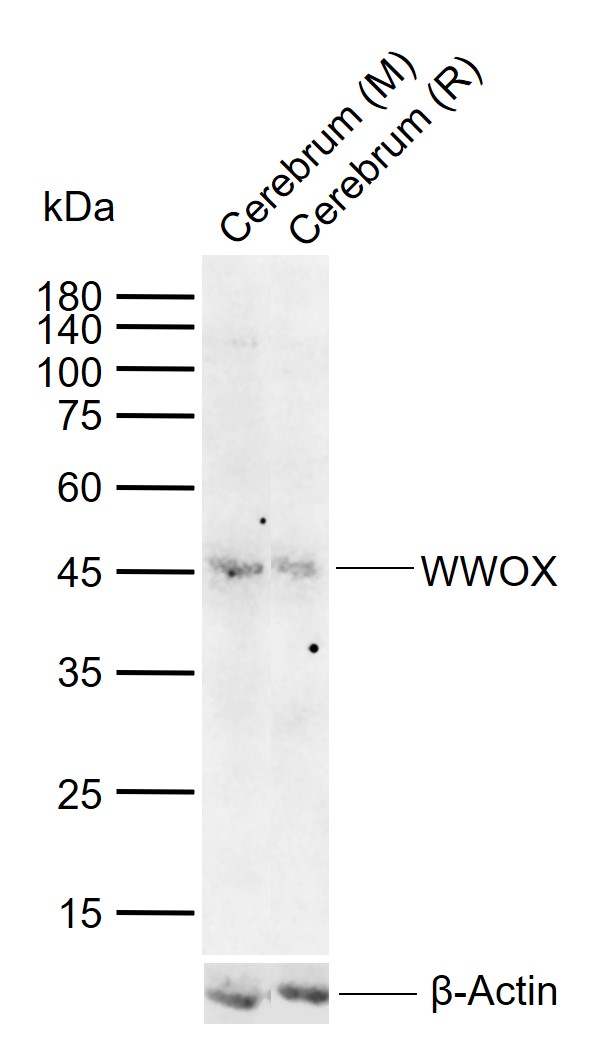
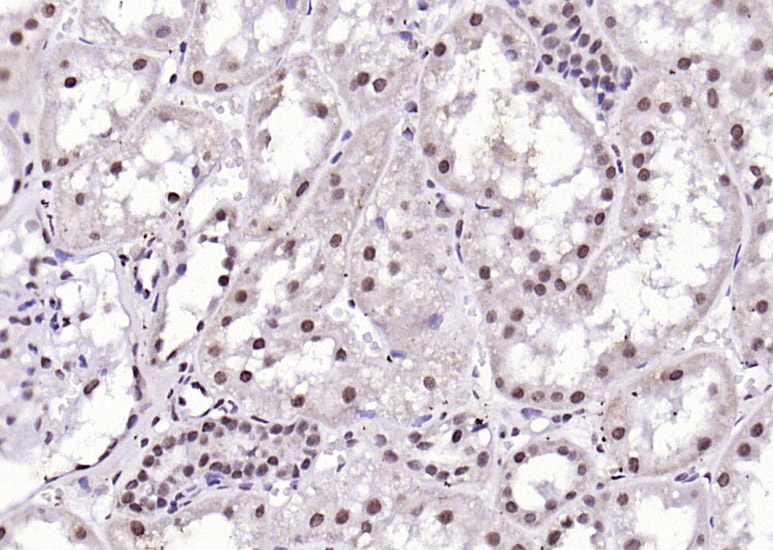
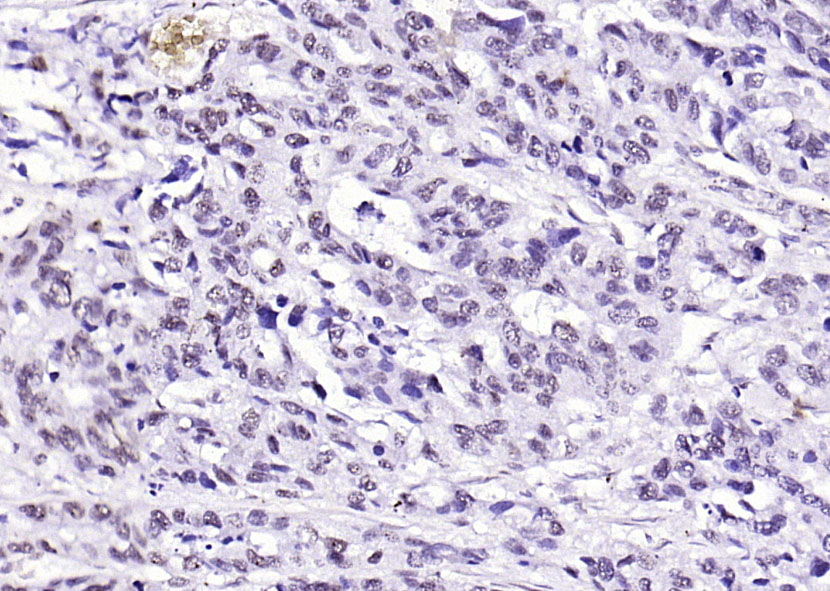
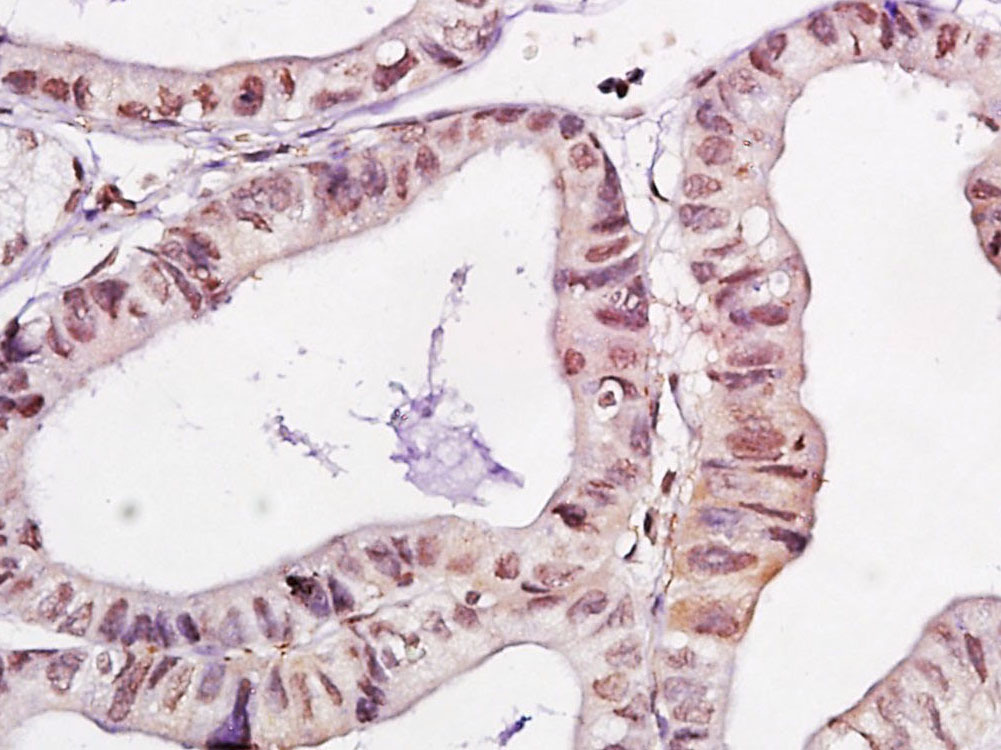
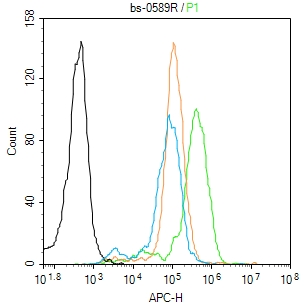


 +86 571 56623320
+86 571 56623320
 +86 18668110335
+86 18668110335

